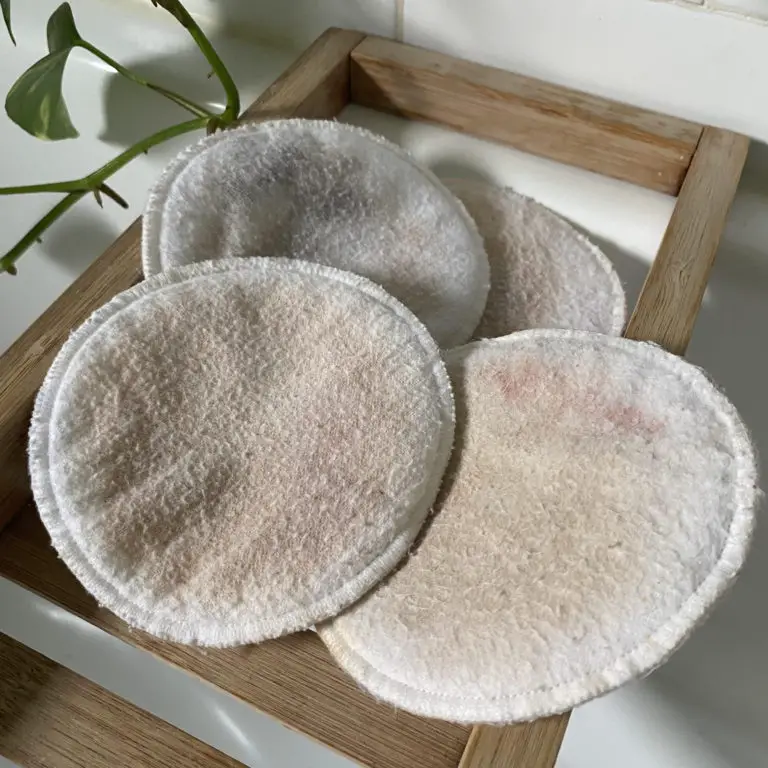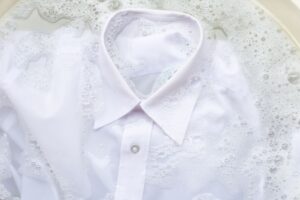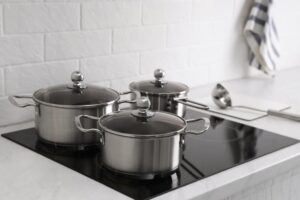Top 5 Low Waste Personal Hygiene Products
Reducing consumption is the way to go. But we do need to maintain personal hygiene. So some product use is unavoidable.
Here are what I rate to be the top 5 low waste options when it comes to personal hygiene products.
How did I rate these? Well, I focused on swaps I have made and have been able to maintain for more than 5 years. So these are easy swaps that anyone can make. And I also considered the level of waste reduced on account of making these changes and other added benefits.
1. Safety Razor

If you aren’t using one you need to.
Why?
Clearly, because disposable razors are a single-use, mainly plastic product. I read somewhere (source unknown) that in the US an estimated 2 billion razors are thrown out each year. I would estimate the average person goes through one a fortnight (I think I went through 1 a month since I avoided shaving when I could!).
This adds up to 26 a year and over 40 years of shaving that’s 1,040 razors you’ve added to landfill. Sure there are options to recycle this now through Terracycle (certain brands) but honestly why bother with that. It’s all so unnecessary when safety razors offer a reusable alternative.
Other benefits?
It uses only one blade so leads to less skin irritation and ingrown hairs (think of the multiple blades in a disposable razor going over the same piece of skin more than once – it’s not good).
The blades are very effective at removing hairs – I have thick black hair and I have no complaints (don’t ask for proof now, it’s winter!)
It will save you money – a pack of mid-range disposable razors would cost you around $26 a year. A safety razor has a one-off cost of around $40. But the replaceable blades would cost you around$6 a year. Not a huge difference but enough to show you those cheap razors ain’t the cheapest option out there. The body of the safety razor is usually built to last, so the $40 you pay for it is a one-off cost.
My experience?
I brought my safety razor 7 or more years ago from eBay. No idea what brand. It wasn’t cleaned before I took this photo but hey, doesn’t look too bad 7 years on right? It’s still going strong.
I’ve never had any issues with nicks or cuts – it’s not called a safety razor for nothing.
And importantly, it does shave really well.
The blades do need to be replaced, of course, so it’s not a completely zero-waste option. However, the blades are 100% metal which can be recycled. You just have to collect them and then drop them off at a specialised recycling place. There are a lot of metal recycling places out there.
Here’s my bad – I don’t recycle the blades. I don’t go through so many in the year (only 3 – 4) and I tend to wrap them up and put them in the normal trash. Works for me.
2. Coconut Oil

I use this as an all-over body moisturiser and as a shaving cream. Works so well, even in winter when I tend to go all lizard skinned if I forget to moisturise.
Why make the switch?
Saves on so much plastic! The use of body lotion varies from person to person – reading some blog posts it can range from 1 a month to 1 a lifetime. Sometimes it’s a case of people buying a lotion, then getting sick of it and then buying a new one in a couple of months.
For me, I would say I would save around 4 plastic bottles a year from making this swap. Over a 60 year lifetime of using lotions, that’s 240 plastic bottles are saved from production and landfill.
And if you use it as shaving cream I would say you would be saving 4 bottles a year. Over 40 years of shaving that’s 160 bottles saved from production and landfill.
Of course, coconut oil doesn’t drop from the sky. But you can buy it in bulk in glass jars, which is 100% recyclable and it doesn’t down-cycle like plastic.
My experience?
I find coconut oil to be effective at keeping my skin smooth – and my skin does get dry VERY EASILY. There have been times where I have gone without moisturising and it’s not been good for me. Look like a scaly lizard skinned creature. And my knees and elbows dry up to the point where the skin starts to peel badly.
My problem was that I never built-in skincare into my routine. Kinda gross but true.
This was before I started using coconut oil.
Now, I have a jar of coconut oil in the shower and I make sure to lather myself up with the oil when I take my daily shower. It’s just habit now and it works so well. I also have a jar on my bedside table. Have had no skin issues since adopting this routine.
As for using it as a shaving cream, coconut oil is AWESOME. After I have moisturised in the shower, I’m ready to shave right over my legs using my safety razor. It hasn’t destroyed my safety razor and it works like a charm. Just glides right over and keeps my legs smooth.
3. Reuseable Make-Up Wipes

Don’t judge this swap by the photo above. They are not as gross as they look. Promise.
They clean up just fine and won’t destroy your skin, unlike the disposable alternatives. So this is a change you would want to make.
Why make the switch?
So as I write this I realise that this switch is probably not one that ranks up there in terms of the waste it saves. Because with the reusable wipes I use micellar water to help remove my make-up. Which comes in a plastic bottle. So there’s some plastic connected to this (I am sure there are better alternatives to micellar water, which I am open to exploring).
That aside, compared to other alternatives reusable make-up pads are a pretty good option.
For example, compared to using disposable make-up wipes. You might go through a packet a month (there are 25 wipes in one packet). So that’s 12 packets a year, which is around 480 packets over a 40 year lifetime. And the whole thing ends up in landfill – the wipes inside each packet and the plastic wrapping all around it. Think about it – 25 wipes per packet and 480 packets, that’s 12,000 make up wipes into landfill in your lifetime!
And yes, you could use disposable cotton pads but why use disposable anything? It’s just money down the drain. And adding to landfill. It’s a small item but let’s say you use one each day to take off your make-up. That around 4.5 standard-sized packets of cotton pads thrown out each year (each pack contains 80 rounds). Over a lifetime that’s one big pile of pads. Sure cotton decomposes (in less than a year if it’s pure cotton) but again think of the energy that went into producing them. So unnecessary when there is a reusable alternative.
Other benefits?
Make-up wipes are full of chemicals that are noted as being harmful to your skin. Here are a couple of opinion pieces on this:
They essentially claim wipes leave your skin prone to irritations, break out and falsely lead you to believe they have cleaned your skin when they have done no such thing. They may seem convenient but at what cost?
My experience?
The make-up pads are smooth and soft and I don’t have to do much to remove the make-up. As mentioned, I use micellar water on the make-up pads and it is enough to remove my make-up. Even mascara.
I use face oil afterwards as a second pass over the skin and remove the excess using another make-up pad.
But it does help that I don’t use make-up that much!
Regardless, trust me, it’s an easy change to make and one worth making.
4. Soap
I’m old enough to remember a time before body wash. Or is it that body wash existed when I was a kid but my parents had no idea so all we used was soap?
Anyway, not sure.
Fact is, somewhere along the way body soap was liquified and put into plastic bottles and soaps went out of mainstream use.
Why make the switch?
Soap uses so much less packaging compared to body wash.
With bodywash, say you go through 12 bottles a year. Over a 60 year lifetime that would be about 720 plastic bottles. While you can recycle these bottles, more often or not they get thrown into landfill. If you do recycle them, they downcycle and never truly disappears (becomes microplastic).
Soap, on the other hand, can be found package free, at markets, some chemists and (my favourite) at Lush. Alternatively, they come in cardboard packaging in the supermarket. While recycled cardboard also downcycles, it does eventually decompose and is a much better packaging option than plastic.
So that’s the packaging/ environmental cost argument
My experience?
Is it gross to use? No. I place it on a loofah and it dries up just fine. As for bacteria growing on the soap, some studies show that this is not a risk.
I’m not grossed out at all by using soap – seems quite natural to me.
More importantly – do I find soap drying? Once upon a time, I remember soaps leaving this squeaky clean unnatural feeling. The reason for this relates to the ph level of the soaps – the higher the pH levels, the more likely the soap will dry out your skin and leave that tight squeaky feeling. Here’s a good article that summarises this point and gives the pH levels of the most common brands: https://healthy-skin-care.info/reasons-bar-soaps-make-your-skin-feel-sticky/
After some research for this post I discovered that Dove seems to rate consistently as a good soap for most skin types – it does have the lowest pH level of most soaps out on the supermarket shelves. I read that glycerin soap is really good for those with sensitive skins, which I think you can buy from chemists. Artisan soaps are pretty good from the looks of it, with many of them containing products like shea butter which moisturises the skin. But you (and me) will need to check the ingredients before purchasing to make sure there are no harmful chemicals.
Here’s a list of harmful chemicals that may be found in soaps, especially in those imported from overseas. Just need to avoid these:
- 1,4 Dioxane
- Sodium Lauryl Sulfate
- Triclosan
- Parabens
- Ureas
I tried one of those cheap $1 soaps and it was terrible! It helped that I used coconut oil over my skin after washing my body clean but I still didn’t like using it. Currently, I am using a bar of handmade soap from a market. Have no idea what ingredients it has but its feels so good. Once I finish up using this soap (I brought a stack, package-free), I will probably start using Dove. And my husband knows to splurge me with something from Lush for my birthday so I can expect that (yeah, I like getting soap for my birthday).
5. Bamboo Toothbrush

You’ve probably seen this -if not, take a closer look at your supermarket shelves. They’re popping up.
Why make the switch?
A rough estimate is that we use around 300 toothbrushes in a lifetime. At best these may decompose in landfill in 100 years but more likely they will last hundreds of years because plastics, due to their chemical structure are really difficult to break down.
Bamboo toothbrushes aren’t exactly zero waste – they end up in landfill just like plastic toothbrushes. But the main body of these toothbrushes will take around 6 months to decompose – already a better choice. Added to the fact that bamboo production is a lot less energy-intensive than plastic, bamboo toothbrushes are a good option.
The bristles are likely to be made of plastic – it seems to be unavoidable. I liked this post from My Plastic Free life that goes into the problem with toothbrush bristles:
There just doesn’t seem to be a good alternative out there. Nylon-4 bristles are said to be biodegradable, but that only happens under certain conditions, not necessarily in landfill. And many companies lie about what the bristles are really made from – claiming they are Nylon-4 or made from bamboo but those claims have been disproven in some cases – so there’s that.
What I am finding now is that bristles are made from charcoal-enhanced bamboo. I have yet to find information that shoots this one down so if you are buying a bamboo toothbrush, I would look for one that also has charcoal-enhanced bamboo bristles.
And go for ones with cardboard packaging. As noted in my last post, cardboard packaging is a much better alternative to plastic.
My experience?
I brought mine 5 years back and back then nylon bristles were the only option. I wouldn’t be buying that again.
That aside, this switch is super easy to make. A bamboo toothbrush is no different to a regular toothbrush, as long as it is well made, as most are from what I have seen. Here’s a review by a dentist if you need convincing: https://www.dentalaware.com.au/bamboo-charcoal-ecotoothbrush-review/
One thing to be aware of is that the bamboo can get mouldy if you do not keep the bottom of it dry. That can get a bit tricky. But that sometimes happens with plastic brushes.
The easiest switch to make.
I don’t think it will be long before plastic toothbrushes are a thing of the past. Help make that happen.
Disclosure: Actually using plastic toothbrushes at the moment. I got a whole heap of plastic toothbrushes from some decluttering I did at someone’s home. They weren’t needed and we couldn’t donate them so I took them.
xxx Tahsin




